Hospitals and healthcare facilities face constant threats such as theft, tampering, and fraud, which can undermine trust and compromise patient care. However, one effective way to combat these threats is by using tamper-evident labels, bags, and tape.
These products are designed to safeguard high-value items like medications, medical devices, and confidential patient information by making any unauthorized access immediately visible. This article explores how these simple yet effective solutions can help hospitals meet regulatory compliance standards and enhance security.
The Evolving Landscape of Hospital Security Challenges

Hospital security is a comprehensive system designed to protect a healthcare facility. Effective security measures are essential in maintaining patient care, confidentiality, and overall trust in the hospital’s ability to safeguard critical resources.
Key hospital security measures include:
- Physical Measures: Securing access points, surveillance systems, and locked storage for medical equipment and medications.
- Personnel: Hiring trained security officers, hospital staff, and emergency responders who monitor activities and address security threats.
- Evident Solutions: Using advanced solutions like tamper-evident labels, bags, and tape to prevent unauthorized access and ensure the integrity of sensitive materials.
Together, these components form a robust security strategy that helps protect hospital assets, improve patient safety, and ensure compliance with industry regulations.
Tamper-Evident Solutions for Hospital Security

Tamper-evident solutions are specialized tools designed to detect tampering and ensure the security of valuable items. These solutions include tamper-evident labels, tamper-evident tapes, and tamper-evident bags. These technologies are widely used in hospitals for:
- Medication Management & Pharmacy: Tamper-evident labels and tape are indispensable for securing medication containers, pharmaceutical packages, and unit-dose dispensing. They ensure that medications remain intact, uncontaminated, and have not been diverted or tampered with before reaching the patient.
- Medical Equipment & Supply Chain: Applied to high-value medical equipment such as diagnostic devices, portable monitoring equipment, surgical tools, and laboratory instruments, tamper-evident solutions prevent theft, unauthorized access, and ensure equipment has not been opened or altered.
- Confidential Documents & Patient Information (PHI): Hospitals extensively use tamper-evident bags and labels to secure confidential documents, patient records, prescriptions, and legal paperwork (e.g., patient discharge summaries, consent forms).
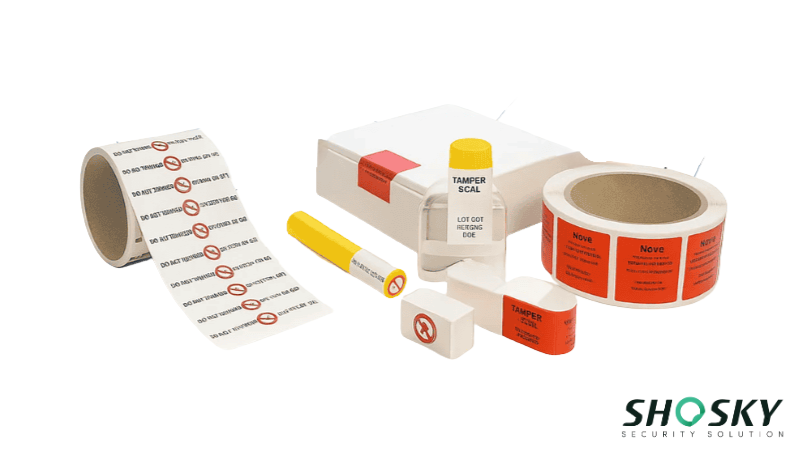
- Lab Specimens & Forensics: Tamper-evident bags and labels are vital for maintaining the chain of custody for blood samples, urine specimens, biopsies, and forensic evidence, ensuring their integrity from collection to analysis.
- Patient Valuables & Personal Property: Secure, numbered tamper-evident bags are used to store and track patient belongings upon admission or during surgical procedures, preventing disputes and loss.
By incorporating tamper-evident technology into hospital security protocols, healthcare facilities can better protect sensitive items and patient information, reducing risks such as theft, fraud, and data breaches.
Types of Tamper-Evident Solutions for Hospital Security
Tamper-evident technology offers a variety of solutions tailored to different security needs. Here’s a detailed look at three common types:
Tamper-Evident Tape
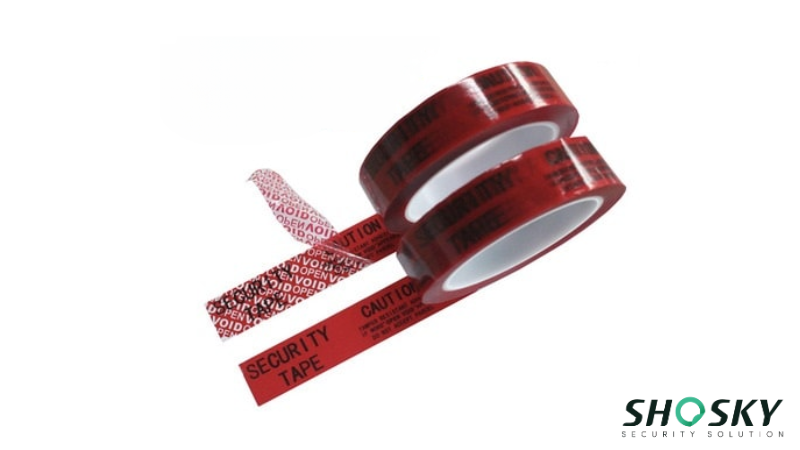
Tamper-evident tape is a versatile security solution that you can use to seal packages, secure doors, and protect storage areas in the hospital. Its effectiveness stems from its design; when the tape is removed, it leaves behind visible evidence of tampering. This evidence can take several forms:
- Void patterns: When removed, the tape reveals a “VOID” message or a similar pattern, clearly indicating that the seal has been broken.
- Residue: Some tamper-evident tapes leave a sticky residue on the surface they were applied to when removed, providing further visual evidence of tampering.
- Unique markings: Some tapes incorporate unique markings or patterns that are destroyed when the tape is removed, leaving behind a clear indication of tampering.
These signs act as strong deterrents against unauthorized access, as they clearly highlight any attempts to tamper with the secured item. Such adaptability of tamper-evident tape makes it suitable for various hospital applications. In high-risk areas such as medication storage rooms or supply cabinets, the tape acts as an extra layer of protection, preventing unauthorized removal or contamination of critical items.
For external shipments of medical supplies, it provides visible assurance to recipients that the contents have not been accessed during transit. So, by incorporating tamper-evident tape into daily security protocols, hospitals can enhance their overall safety and operational integrity.
Tamper-Evident Labels

Tamper-evident labels are designed to stick to surfaces and leave visible evidence of tampering when removed. They are frequently used on medication containers, files, and equipment. Their key feature is also a clear visual indication of tampering, which is crucial for maintaining accountability and ensuring the integrity of the items they secure. These labels often incorporate:
- Void patterns: Similar to tamper-evident tape, these labels reveal a “VOID” message or a similar pattern when removed.
- Unique markings: These labels may incorporate unique serial numbers or other markings that are destroyed when the label is removed.
- Special adhesives: Some labels use specialized adhesives that leave residue or a distinct pattern when removed.
Because of their tamper-evident nature, these labels can play a vital role in ensuring hospital security. For medication containers, these labels can confirm that the contents have not been tampered with or substituted, maintaining the integrity of the medication.
When used on files containing sensitive patient information, they can provide assurance that the files have not been accessed or altered without authorization. Similarly, labels applied to medical equipment ensure that it has not been used, opened, or modified inappropriately.
Tamper-Evident Bags
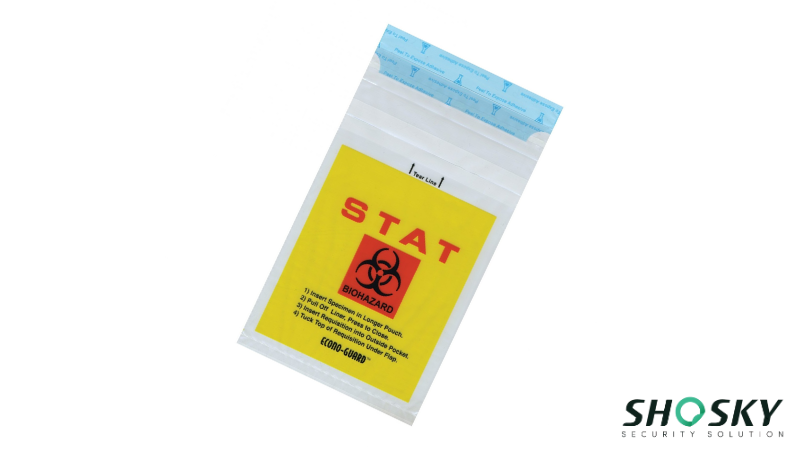
Tamper-evident bags are designed to provide a secure and tamper-evident enclosure for valuables, confidential patient information, and medical supplies. These bags are typically made from materials that tear or leave visible signs of opening when compromised. Features include:
- Tear-away strips: Some bags incorporate tear-away strips that leave a visible gap if the bag is opened.
- Special seals: Others use special seals that are easily noticeable if broken or tampered with.
- Customizable printing: Many bags offer the possibility of custom printing with logos, barcodes, or other identifying information.
These bags serve various critical functions within a hospital setting. For securing valuables, tamper-evident bags ensure that medical equipment or supplies are protected from theft or unauthorized use. When used for confidential patient information, they provide a secure means of transport or storage, ensuring privacy and compliance with regulatory requirements.
For medical supplies, these bags help maintain the integrity of the contents, providing assurance that the items have not been tampered with or compromised. Besides, these bags are customizable. Customization not only aids in content identification and tracking but also enhances operational efficiency, making tamper-evident bags a versatile and valuable tool for strengthening security across hospital departments.
5 Benefits of Using Tamper-Evident Solutions for Hospital Security
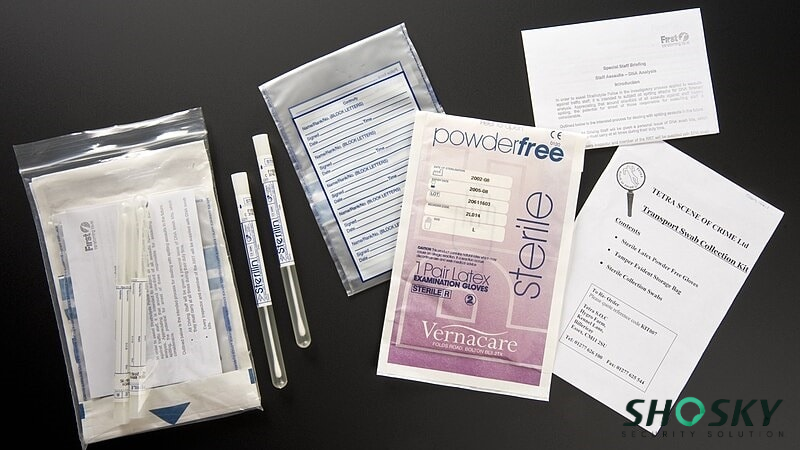
Beyond simply indicating a breach, tamper-evident solutions offer a cascade of benefits that directly impact a hospital’s core mission:
1. Improving Patient Safety and Medication Security
Tamper-evident solutions play a key role in patient safety by safeguarding medication containers, pharmacy inventories, and IV bags, thus preventing:
- Poissoning: Not allowing personnel or outsiders to gain unlawful access and confiscate controlled substances, a concern currently on the rise in clinical practice.
- Contamination & Adulteration: Ensuring medication, vaccines, and sterile items are not tampered with, and remain uncompromised from the dispensary to the patient.
- Patient Identification lapses: minimizing the risks of identification when used on patient wristbands or specimen labels.
Tamper-evident solutions provide tangible evidence of tamper-proof breaches, thereby permitting rapid intervention to spare the patients from the risk of consuming a damaged product.
2. Compliance With Regulations & Substitutions
Hospitals are highly monitored departments of hospitals in a regulated environment. Tamper-evident solutions are an important asset used in hospital practice to prove compliance and due diligence with the following:
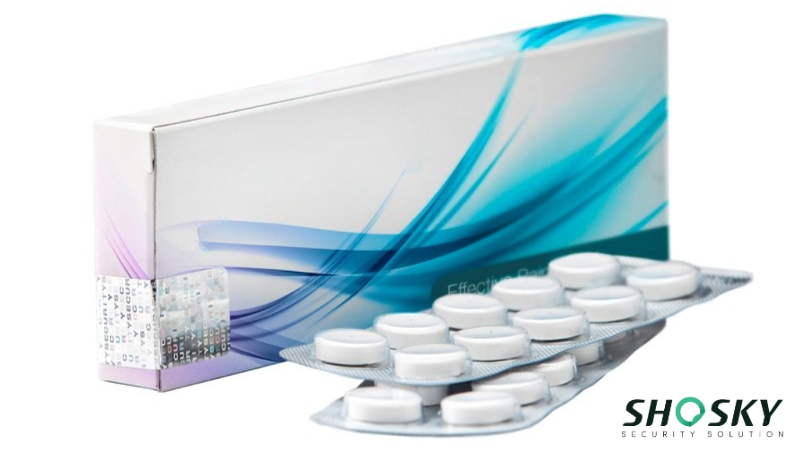
- HIPAA (Health Insurance Portability and Accountability Act): By immobilizing patients’ records, lab reports, and/or confidential records during their transport or storage phase to eliminate any danger of Protected Health Information (PHI) from unauthorized people. HIPAA non-compliant hospitals can be severely penalized up to $100-50,000,000 for each violation, with an annual maximum of $1.5 million per consistent violation, and even criminal charges in extreme situations.
- DEA (Drug Enforcement Administration): Required to adhere to regulations for controlled substances administration. Tamper-evident seals, labels, and bags give hard proof of the integrity of narcotics, which facilitates intense inventory management, minimization of diversion, and preserves the audit history required by the DEA. Failure to observe and comply with DEA rules will incur heavy civil fines (e.g., up to $18,759 for recordkeeping violations) and criminal charges.
- The Joint Commission and DNV GL Standards: These accreditation bodies require robust security measures for patient safety, medication management, and the environment of care. Tamper-evident solutions offer verifiable proof of adherence to these critical standards, facilitating smoother audits and maintaining accreditation status.
3. Enhanced Asset Protection & Loss Prevention
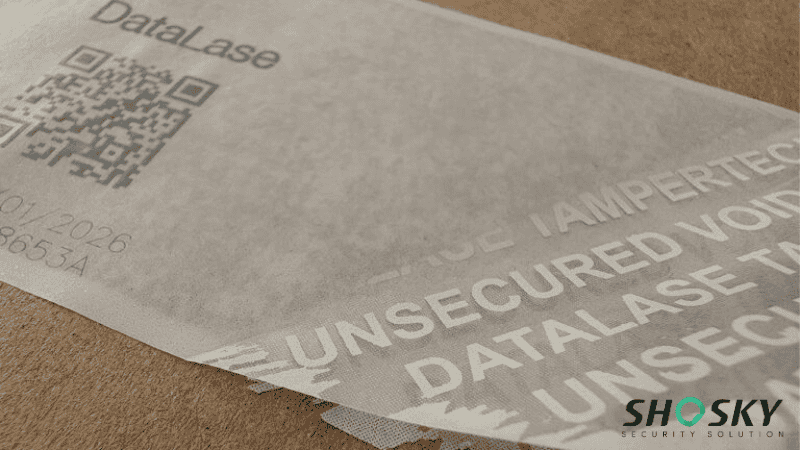
Hospitals are home to vast amounts of high-value assets, ranging from diagnostic equipment to specialized surgical instruments. Tamper-evident solutions serve as a powerful discouragement and detection tool:
- Less Theft: The fear of detectable tamper evidence deters Opportunistic theft of medical devices, IT equipment, and supplies.
- Inventory Management: The indication of tampering helps with locating inventory discrepancies, streamlining the investigation of loss, and enhancing accountability.
- Safening Sensitive Infrastructure: Sealing IT closets, server rooms, and sensitive equipment keeps outsiders from unauthorized admission, leading to data breaches or downtime.
4. Optimized Operations & Audit Trails
In addition to security benefits, they can streamline operations:
- Quicker Incident Response: Visual indications help reduce prolonged analysis of “what if” scenarios, providing security teams with quicker identification of where and at what point the breach happened.

- Transparent Chain of Custody: Serialized plaques and seals set an undeniable audit trail, from procurement to distribution to disposal. This is priceless in cases of internal audits, insurance claims, and legal prosecutions.
- Fewer Disputes: Clearly marking tampering helps in avoiding disputes over lost or damaged merchandise (e.g., suppliers, insurers).
5. Building Trust & Reputation
In industry and in healthcare, powered by trust, building and maintaining public confidence is essential:
- Patient Confidence: Patients are likely to be more comfortable relying on visibly safeguarded medications, their belongings, and confidential data.
- Staff Accountability: By enforcing a culture of accountability through tamper-evident solutions, security measures are upheld.
- Role of Brand Reputation: By showing a proactive agenda towards security and patient safety, the hospital boosts its reputation as a reliable healthcare provider.
By strategically implementing the tamper-evident solutions, hospitals can create a multi-layered defense system that safeguards not only their assets but also their most critical resource: patient well-being and trust.
How to Implement Tamper-Evident Solutions in Your Hospital?

Integrating tamper-evident products into hospital security protocols can significantly improve the protection of sensitive information, medications, and medical equipment. Below is a step-by-step guide to help your hospital implement these solutions effectively.
Step 1: Assess Security Needs
Begin by evaluating the hospital’s security vulnerabilities to determine where tamper-evident solutions are most essential.
Focus on high-risk areas such as medication storage rooms, pharmacies, and restricted zones housing medical equipment. Additionally, consider sensitive locations like those storing patient files, confidential documents, or high-value items such as medical devices and supplies.
This targeted assessment helps identify critical areas where tamper-evident solutions can provide the greatest impact. By prioritizing these zones, hospitals can allocate resources efficiently and enhance security measures where they are needed most.
Step 2: Choose the Right Tamper-Evident Products
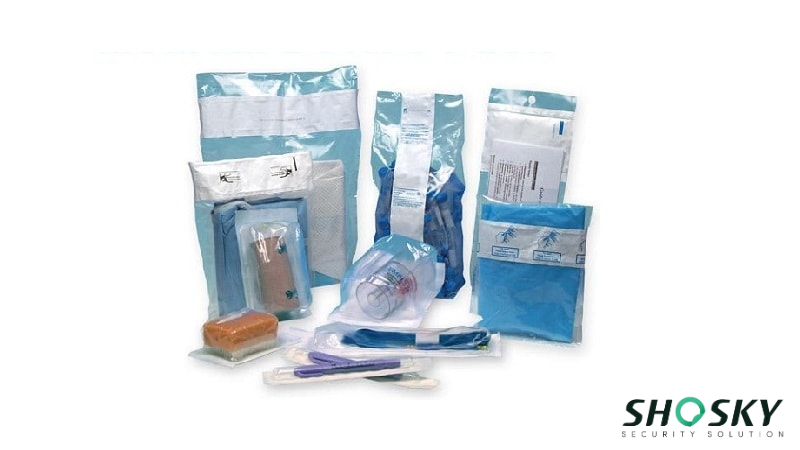
There are various tamper-evident solutions available, including tamper-evident tape, labels, and bags. As discussed in detail above, each solution has its specific use cases:
| Solutions | Use cases |
|---|---|
| Tamper-Evident Tape | Doors, packages, and storage areas |
| Tamper-Evident Label | Medication containers, patient files, and equipment |
| Tamper-Evident Bag | Confidential information, medical supplies, and valuable items |
Choose the solutions that align with the hospital’s needs and security protocols.
Step 3: Integration with Existing Security Systems
To maximize the effectiveness of tamper-evident solutions, they should be seamlessly integrated into the hospital’s existing security systems. Combining these products with physical security measures such as locks, surveillance cameras, and access control systems creates a multi-layered defense against unauthorized access.
For example, applying tamper-evident tape to storage cabinets or doors provides an added level of security, clearly indicating any attempts at unauthorized entry that other measures might not immediately reveal.
Step 4: Develop Clear Procedures
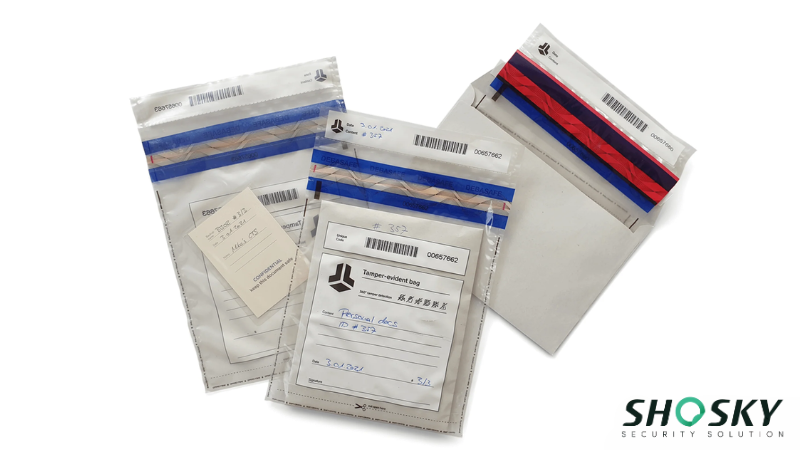
Establishing well-defined and documented procedures or SOPs is essential for the effective use of tamper-evident solutions in a hospital setting. These guidelines should specify when and where to apply tamper-evident products.
Also, these guidelines should detail how to inspect tamper-evident products for any signs of tampering and the proper way to report such findings or any other issues. This ensures that any breaches are identified and addressed promptly.
Additionally, a clear response plan should be in place for incidents of tampering, including notifying the security team, supervisors, and relevant departments. This step provides a structured approach, helping staff handle potential security breaches confidently and effectively, minimizing risks to patient safety and hospital operations.
Step 5: Train Hospital Staff
Proper training is equally vital to ensure the effective use of tamper-evident solutions in a hospital setting. Training should focus on several key areas. Hospital staff (nurses and doctors) need to be educated on the purpose and functionality of tamper-evident products, including their role in maintaining security and compliance.

They must also receive hands-on instruction and learning sessions on the correct application of tamper-evident solutions, such as tape, labels, and bags, to items like medication containers, equipment, and patient records. This ensures consistency and effectiveness in their use.
With comprehensive training, hospital staff can confidently incorporate tamper-evident solutions into their daily operations, enhancing overall security and patient care.
Step 6: Monitor and Evaluate the System
After implementing tamper-evident solutions, ongoing monitoring and evaluation are essential to ensure their effectiveness and continuous improvement. Periodic audits should be conducted to verify that these products are being used correctly and consistently across all areas of the hospital.
Regularly reviewing incident reports can help identify patterns of tampering or breaches, allowing for proactive adjustments to strengthen security measures.
Feedback from hospital staff is equally important. By gathering input on the practicality and ease of use of tamper-evident solutions, management can address challenges or make necessary modifications. This collaborative approach ensures the system remains both efficient and user-friendly while maintaining a high level of security for patients and hospital assets.
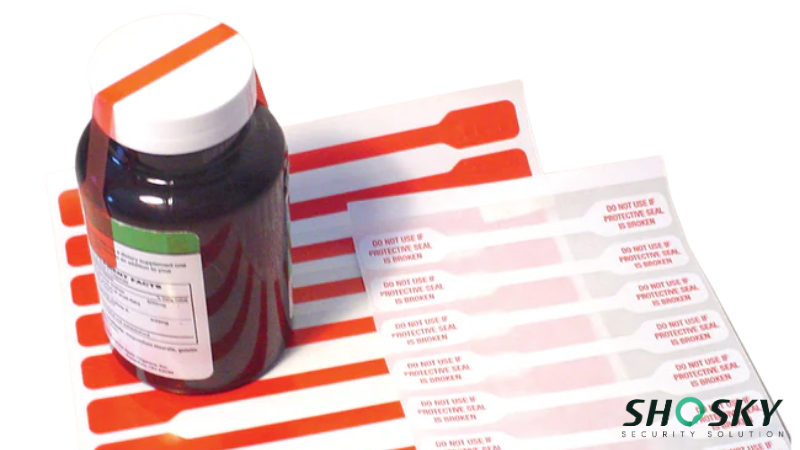
FAQs
Are tamper-evident bags suitable for the pharmaceutical industry?
Yes, tamper-evident bags are highly suitable for the pharmaceutical industry. They help protect medications, prevent unauthorized access, and ensure that products are not tampered with before reaching patients or medical staff.
How do tamper-evident solutions help in controlling hospital inventories?
Tamper-evident solutions improve inventory management by providing clear signs of tampering with medical supplies, medications, and equipment.
Are tamper-evident solutions cost-effective for hospitals?
Yes, tamper-evident solutions are cost-effective in the long term. While there is an initial investment in these products, they help reduce losses from theft, fraud, and inventory mismanagement.
Conclusion
Tamper-evident solutions are indispensable for maintaining hospital security and protecting patients, staff, and valuable assets. These solutions provide clear visual indicators of tampering, allowing hospitals to act swiftly in case of security breaches. With proper implementation and staff training, tamper-evident products help create a safer and more trustworthy healthcare environment.
Establish a Hospital Security System with Shosky Today!
Shosky Security specializes in advanced tamper-evident solutions, including customized labels, bags, and tape designed to meet hospital security needs. Contact us today to explore our full range of tamper-evident solutions or receive expert guidance tailored to your facility’s needs!

